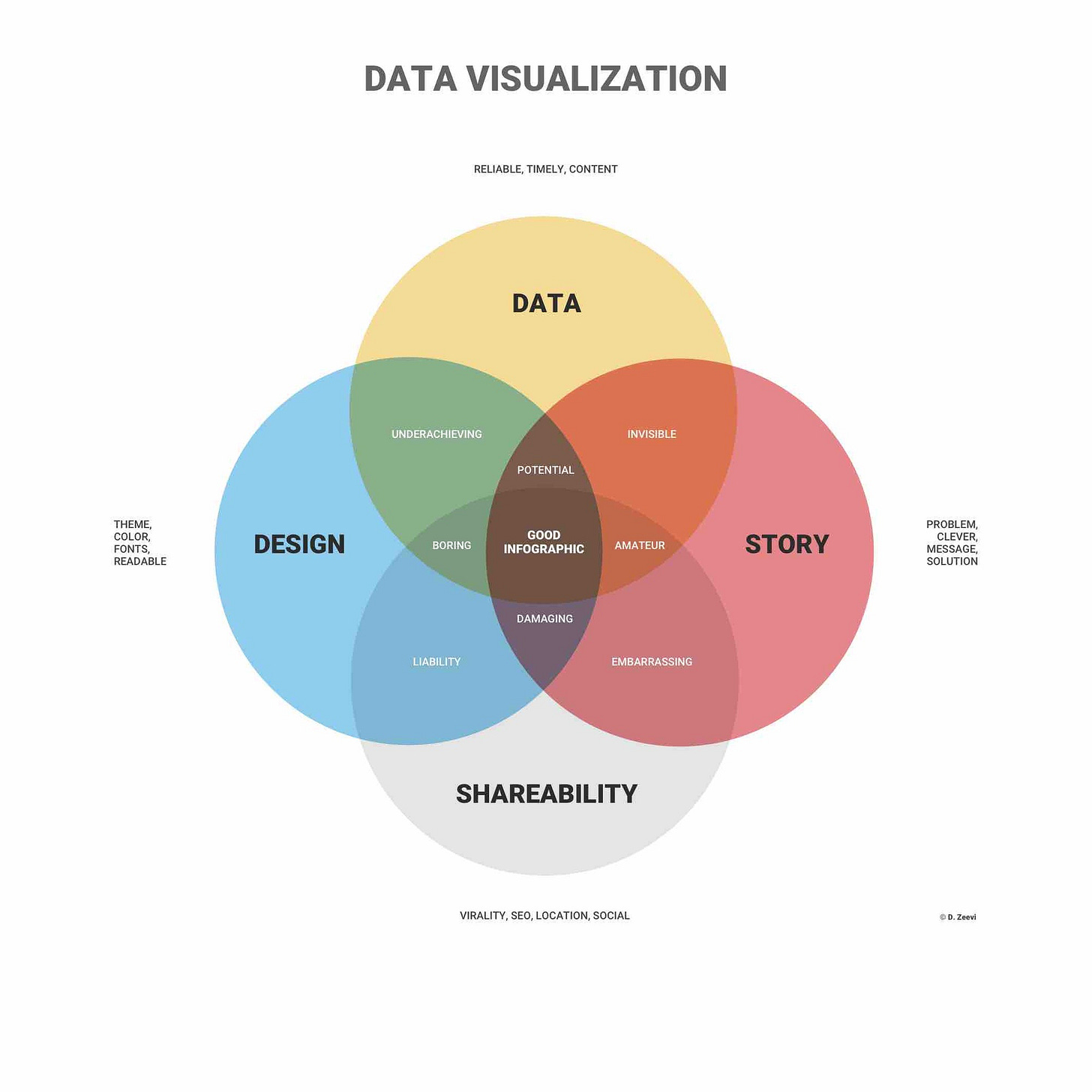The Power Trio: Data Visualization, UX Design, and AI
How these three will define the next generation of dashboards and data visualization
This week I’ve been thinking a lot about AI and about how people are using, and will use AI. I’ve had numerous conversations with my boyfriend about whether or not AI will be detrimental to the job market in the next few years. My take: while I think many companies will use AI to replace low-skill jobs, or ones with repetitive work streams, I believe it will ultimately create more jobs than it will replace. If individuals and businesses use AI properly, they will use it to enhance creativity, enhance business processes, and make certain tasks or job responsibilities more efficient so employees have more time to spend on high-impact projects.
While this newsletter isn’t meant to discuss the future of the job market, it’s something I thought worth discussing in the context of data visualization. How can data visualization, UX design, and AI work together so we can all benefit (and keep our jobs at the same time)?
Good data viz requires a solid understanding of the user.
I strongly believe that good data visualization involves thinking about the user experience first. Who is the primary audience for this analysis/dashboard/chart/presentation? The answer to that question will frame the rest of your work. I was chatting with a colleague in the past week about how user experience (UX) design and data visualization can be powerful partners.
UX design can play a pivotal role in shaping how individuals interact with data visualizations. A well-designed user interface ensures that a data story unfolds seamlessly, allowing users to navigate through analyses effortlessly. UX design focuses on making the complex appear simple–something I think good data visualization strives to do as well.
Can AI make data viz and the user experience even better?
I think so. In my work as a data analyst and data visualization specialist, I find myself trying to find new strategies to create dashboards and visualizations that are customizable by the user—mostly to give the user more freedom to explore data on their own, but also to save myself some time so I don’t need to keep creating new charts from super specific requests. “How can I make this chart useful for multiple people and business questions?” is a question I ask myself often. Well, this is where AI could come in and solve this problem.
Imagine an AI-powered data tool that learns from user interactions, anticipates preferences, and refines data visualizations in real-time. This not only saves time but also enriches the user's analytical journey by presenting insights that might have been overlooked otherwise. And this isn’t fantasy, or even something that “could happen” in the future—companies like Tableau are already doing it.
But what does this mean for data analysts like myself who specialize in creating data visualization, building dashboards, and delivering insights to business stakeholders?
Will AI make data analysts obsolete?
My answer is, probably not. Yes, I’m hoping to have a job in this field for awhile (at least until I can retire, if that ever happens), but I also just don’t think smart, successful businesses will ever replace us. Instead, data analysts should use AI to augment our capabilities to deliver better insights. Here are a few reasons why:
Complex Decision-Making: AI is excellent at processing large volumes of data and identifying patterns, but human analysts bring a depth of understanding and contextual insight that is crucial for complex decision-making. AI can assist in decision support, but the final decisions often require human judgment.
Creativity and Intuition: Data analysts need to think creatively to identify novel solutions or insights from data. While AI is really good at coming up with ideas and sparking creativity, it lacks the ability to hone in on the good ideas in the real-life context where you exist. The ability to ask the right questions, frame problems, and derive meaningful insights from data is still a uniquely human skill.
Ethical Considerations: Ethical considerations in data analysis, such as detecting bias and changing direction in order to avoid, or at least be aware, of bias requires human judgment. AI systems can unintentionally perpetuate bias present in data, and human analysts play a crucial role in ensuring fairness and ethical use of data. There are numerous other ethics concerns with AI—this is just one.
Instead of dwelling on how AI will soon replace us, we need to find ways to work with it to make us more valuable in the job market.
Thanks for reading folks. Until next time,
Sarah


